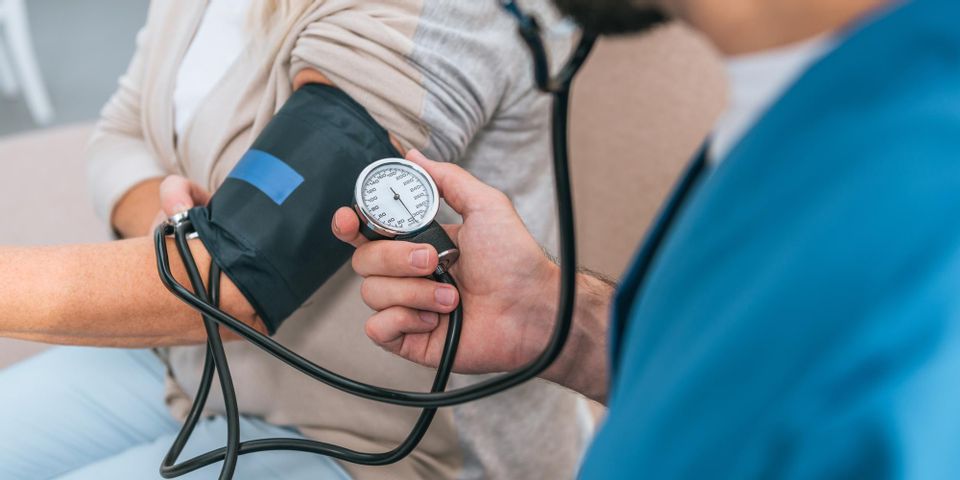4 FAQ About High Blood Pressure

High blood pressure, also known as hypertension, occurs when the force of your blood against the artery wall is elevated, causing microscopic damage that can eventually narrow the arteries and cause blockages. It's one of the biggest risk factors for heart attacks and strokes. Because it’s also relatively common, medical providers take vitals during every office visit and provide a number of treatment options.
An Overview of High Blood Pressure
How is blood pressure measured?
Blood pressure readings have two numbers that appear as a ratio: a systolic number (top) and diastolic number (bottom). The systolic number shows the pressure in your blood vessels when the muscles in your heart contract; the diastolic number represents the pressure in your arteries when they relax.
What happens during a blood pressure reading?
A medical provider or assistant will wrap an inflatable cuff around your upper arm. Then they will position a stethoscope on top of your arm and fill the cuff with air using a small pump on the side. This pressure temporarily cuts off the circulation in your arm.
To measure how quickly blood starts to fill your arteries again, the medical provider will check a meter that gauges cuff pressure. They will slowly deflate the cuff and listen for your pulse. Once they hear it, they will take note of the meter reading to get the systolic number. When the sound fades, this represents the diastolic measurement.
What’s a normal blood pressure reading?
Systolic measurements below 120 and diastolic measurements below 80 are normal for adults.
Clinical hypertension begins with a systolic pressure of 130 or a diastolic pressure above 80.
What causes high blood pressure?
If you have family members with high blood pressure, you’re more likely to develop the condition. Obesity, a high-salt diet, a sedentary lifestyle, stress, and alcohol and tobacco use also increase your risk.
 Most people with hypertension develop it after age 40, but it’s possible for children to have high blood pressure, too. Certain conditions, like kidney disease or a thyroid problem, can cause secondary hypertension, which is characterized by rapid onset and can be especially dangerous. About 6-8% of pregnant women in the U.S. will develop pregnancy-induced high blood pressure.
Most people with hypertension develop it after age 40, but it’s possible for children to have high blood pressure, too. Certain conditions, like kidney disease or a thyroid problem, can cause secondary hypertension, which is characterized by rapid onset and can be especially dangerous. About 6-8% of pregnant women in the U.S. will develop pregnancy-induced high blood pressure.
Some people develop hypertension as a temporary side effect from medications like birth control pills and decongestants.
How will I know if I have high blood pressure?
You can have high blood pressure for years without any symptoms. Fortunately, your medical provider will test your blood pressure at least once annually.
Most people can treat hypertension with medication, like a diuretic or beta blocker. Your medical provider will also probably recommend healthy lifestyle habits. If you’ve been recently diagnosed with high blood pressure or want to be evaluated in Anchorage, AK, Hillside Family Medicine LLC & Occupational Medicine can help. They offer a 24-hour blood pressure monitoring machine to ensure the most accurate readings. To learn more about the practice, visit their website or call (907) 344-0200 to schedule an appointment.
About the Business
Have a question? Ask the experts!
Send your question

